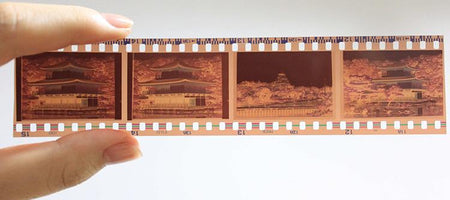When VHS tapes hit the market in the late 70s (yeah, it’s crazy to think it’s been over 40 years), the home theater world dramatically changed. Home videos would quickly become easier and cheaper than ever to record.
We all remember dad roaming around on family vacations shooting embarrassing footage with that oversized camcorder weighing down his shoulder.
But as the video technology began to increase, the size of the videotape started to decrease with the likes of MiniDVs and Digital8 tapes leading the charge. This had a direct effect on creating smaller camcorders that didn’t require two hands and a boulder of a shoulder to port around. Sure, the embarrassing footage didn’t stop, but at least dad was less noticeable when yelling, “Swing batter, batter. Swing!” from the bleachers.
However, this all begs the real question: What was the difference between MiniDV and Digital8? Was one better than the other? Let’s dig in and get the 411 on a couple relics of modern recording media.
MiniDV vs Digital8: battle of the tiny tapes
There’s a good chance that the old box in your basement full of videotapes from the 90s and 2000s has a few of one or both of these tapes in it. And while they look the same on the surface, there is in fact differences under the hood … or in this case, plastic casing. Whatever.
MiniDV |
Digital8 |
|
Compatible with MiniDV (6mm) tape
|
Compatible with HI8, 8mm or Digital8 tape
|
|
Records up to 90 minutes on a tape in LP mode
|
Records one hour per tape
|
|
500-line video resolution capability
|
500-line video resolution capability
|
|
640x480 still-picture resolution
|
640x480 still-picture resolution
|
Get to know the MiniDV
Let’s start this comparison breakdown with the first born, the MiniDV. In the late 90s, the first digital camcorder hit the scene and ushered in the start of the digital revolution. But in order to record your memorable moments, you needed a physical tape, hence the birth of the MiniDV in 1996. All the major manufactures – JVC, Sony, Panasonic, Sharp, etc. – were in on the digital tape action, but as cool as the MiniDV was, it wasn’t perfect.
MiniDV Pros |
MiniDV Cons |
|
MiniDV camcorders were slightly smaller than Digital8 camcorders
|
Not backwards compatible with older camcorder formats (non-digital formats, etc.)
|
|
Manufactured by all the heavy hitters – JVC, Sony, Panasonic, Sharp and Canon
|
Various models offered various features – not as universal
|
|
Better video duplication
|
Get to know the Digital8
In 1999, at the cusp of the millennium, a new kid on the videotape block would hit the home theater scene, the Digital8. Similar to the MiniDV that had just been released a few years prior, Sony’s Digital8 tape wasn’t so much a brand new device, but a digital progression from the previous Hi8 or 8mm analog camcorders that had been released earlier in the decade. But just like the MiniDV, the Digital8 had its fair share of hits and misses.
Digital8 Pros |
Digital8 Cons |
|
Similar body design and backwards compatible with Sony Hi8 and 8mm camcorders
|
Single manufacturer – Sony
|
|
Digital & analog video in/out capability
|
Few variations were available
|
The versus verdict
So, if you had to crown a camcorder victor, who would it be: the MiniDV or Digital8? Well, the answer isn’t that simple because both provided something that the other couldn’t. If you were an avid recording enthusiast back in the 90s, then you probably already had a Sony Hi8 or 8mm camcorder, which made the transition to the digital world easier with Digital8. But, if you wanted a format that had more manufacturer options, and as a result, a lower price point, the MiniDV was the better choice, not to mention it had a longer record time of 90 minutes versus the 60 minutes of Digital8.
So, you be the judge. Who wins in this bout of nostalgic superiority?
Digitize your digital tapes
Whether you’re team MiniDV or side with Digital8, neither really matters when it comes to making sure each of them stays part of your jackpot of memory bliss. The real important thing is to get those digital tapes converted to working digital files (thumb drive, DVD or digital download) that you can actually watch and share with friends and family. Let’s face it, you probably don’t have your camcorder anymore, and even if you do, are you sure it even works? By converting your MiniDV and Digital8 tapes with Southtree, you’re well on your way to reliving the millennium like it was yesterday and not nearly a quarter of a century ago. Wow, times flies.













